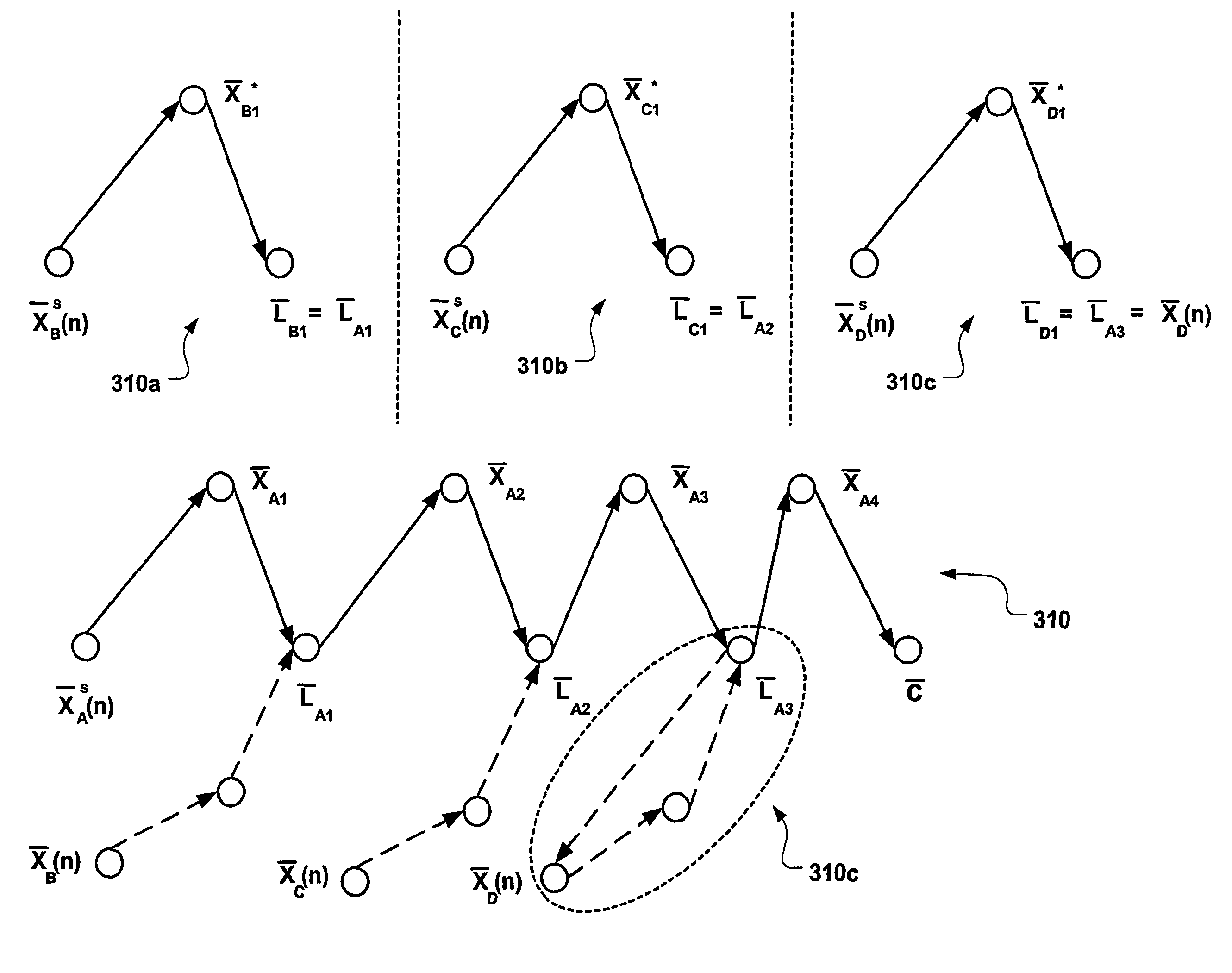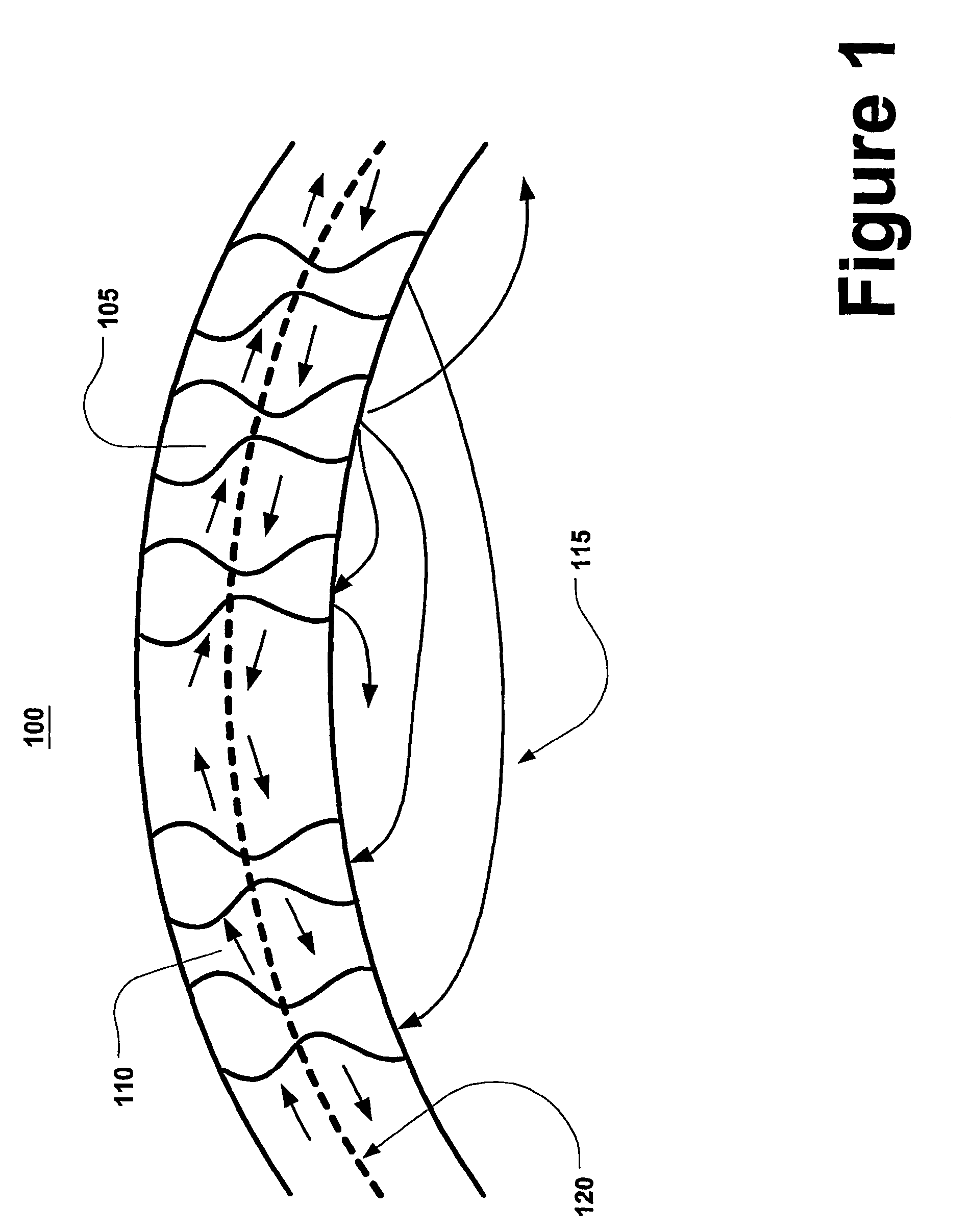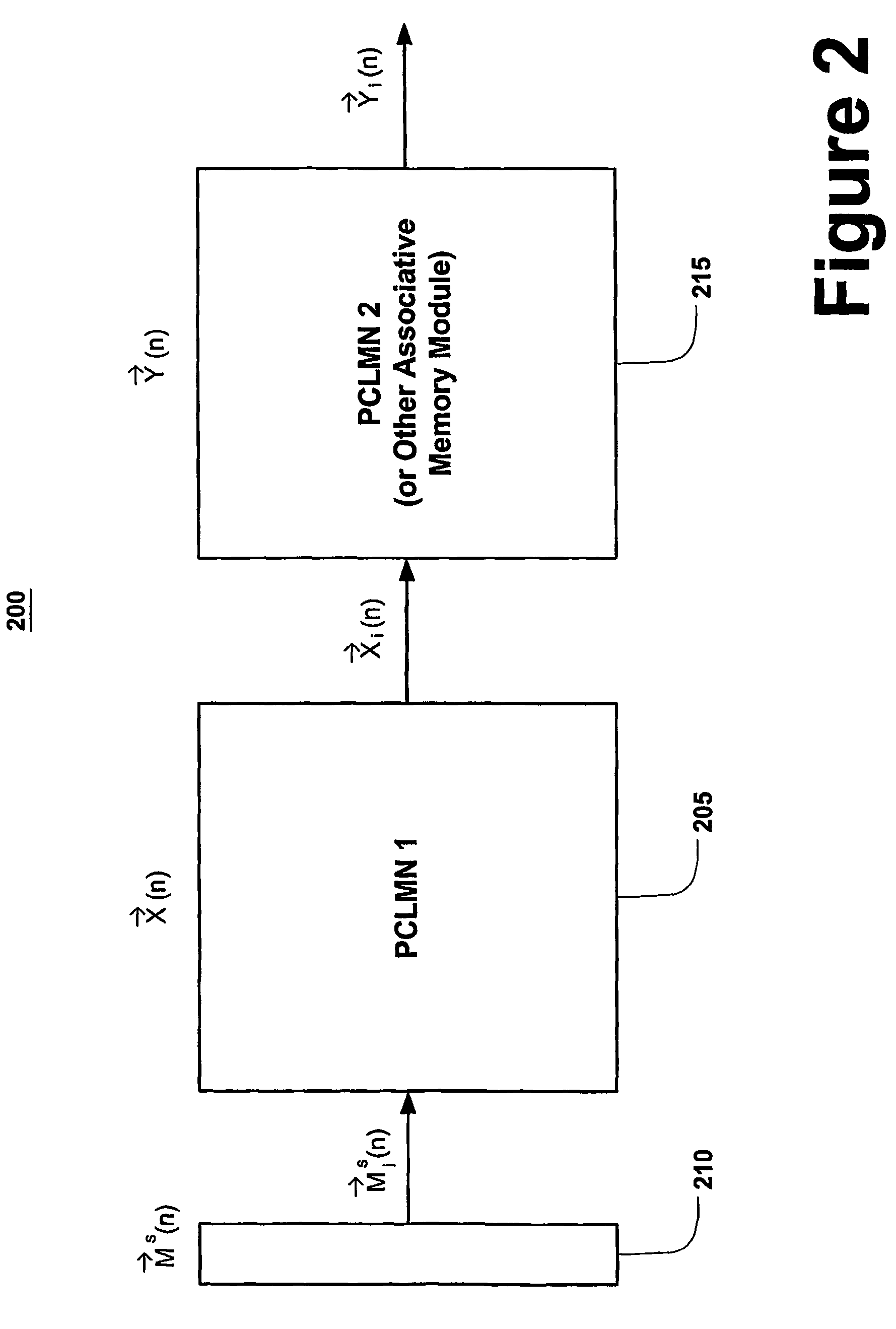Dynamical brain model for use in data processing applications
a brain activity and data processing technology, applied in the field of model brain activity, can solve problems such as incomplete understanding, unanswered questions about these brain functions, and progress to further this incomplete understanding
- Summary
- Abstract
- Description
- Claims
- Application Information
AI Technical Summary
Benefits of technology
Problems solved by technology
Method used
Image
Examples
Embodiment Construction
Overview
[0020]Corticonic networks are biologically inspired and are naturally suited for handling dynamic input patterns. These networks incorporate abstractions of known attributes of cortical organization and function. The overwhelming complexity of cortical tissue on the microscopic level of neuronal wiring and synaptic connections offer considerable obstacles in developing a computationally efficient microscopic approach to modeling the cortex and its functions. Despite notable progress in “reverse-engineering” the cortex on a sufficiently detailed level, many of the obstacles in modeling the cortex still remain. Specifically, the large number of neurons per millimeter cube of cortical tissue (˜105) and the dense connections between them (103 to 104 connections per neuron, resulting to approximately 3 km of axonal lengths per mm3) render the computational complexity of a detailed model of such as small volume of cortex as extensive if not exhausting. Moreover, the challenges in ...
PUM
 Login to View More
Login to View More Abstract
Description
Claims
Application Information
 Login to View More
Login to View More - R&D
- Intellectual Property
- Life Sciences
- Materials
- Tech Scout
- Unparalleled Data Quality
- Higher Quality Content
- 60% Fewer Hallucinations
Browse by: Latest US Patents, China's latest patents, Technical Efficacy Thesaurus, Application Domain, Technology Topic, Popular Technical Reports.
© 2025 PatSnap. All rights reserved.Legal|Privacy policy|Modern Slavery Act Transparency Statement|Sitemap|About US| Contact US: help@patsnap.com



